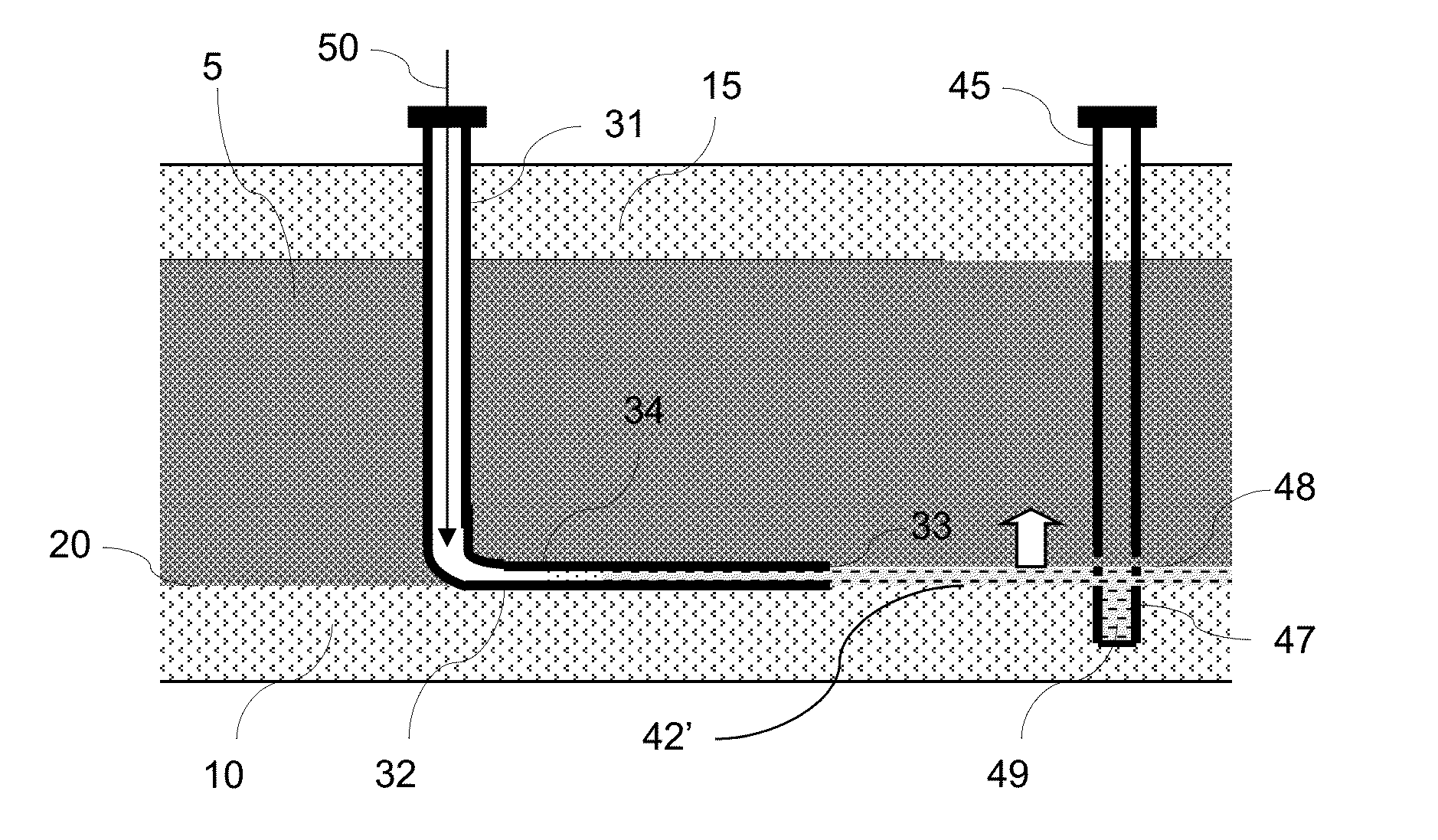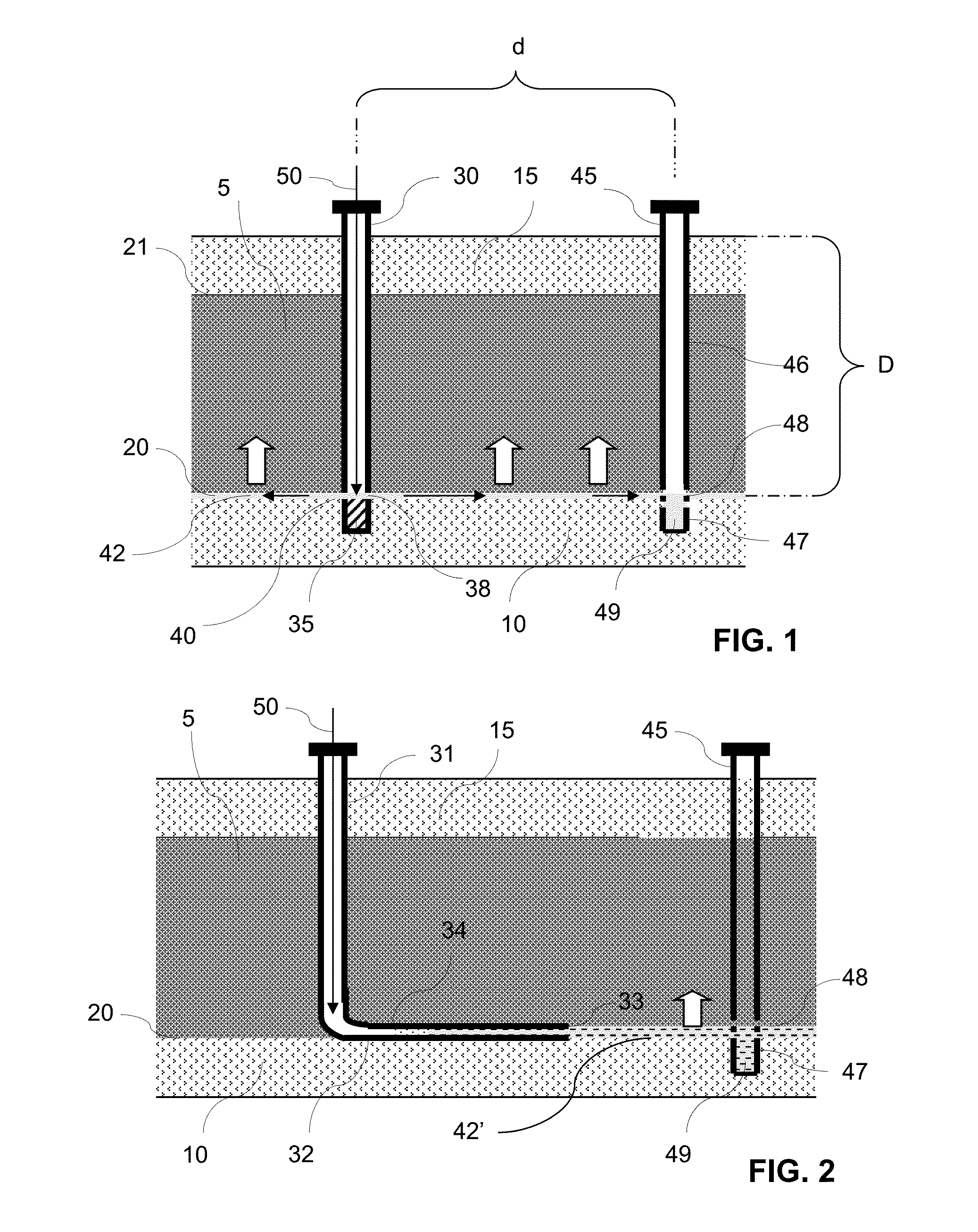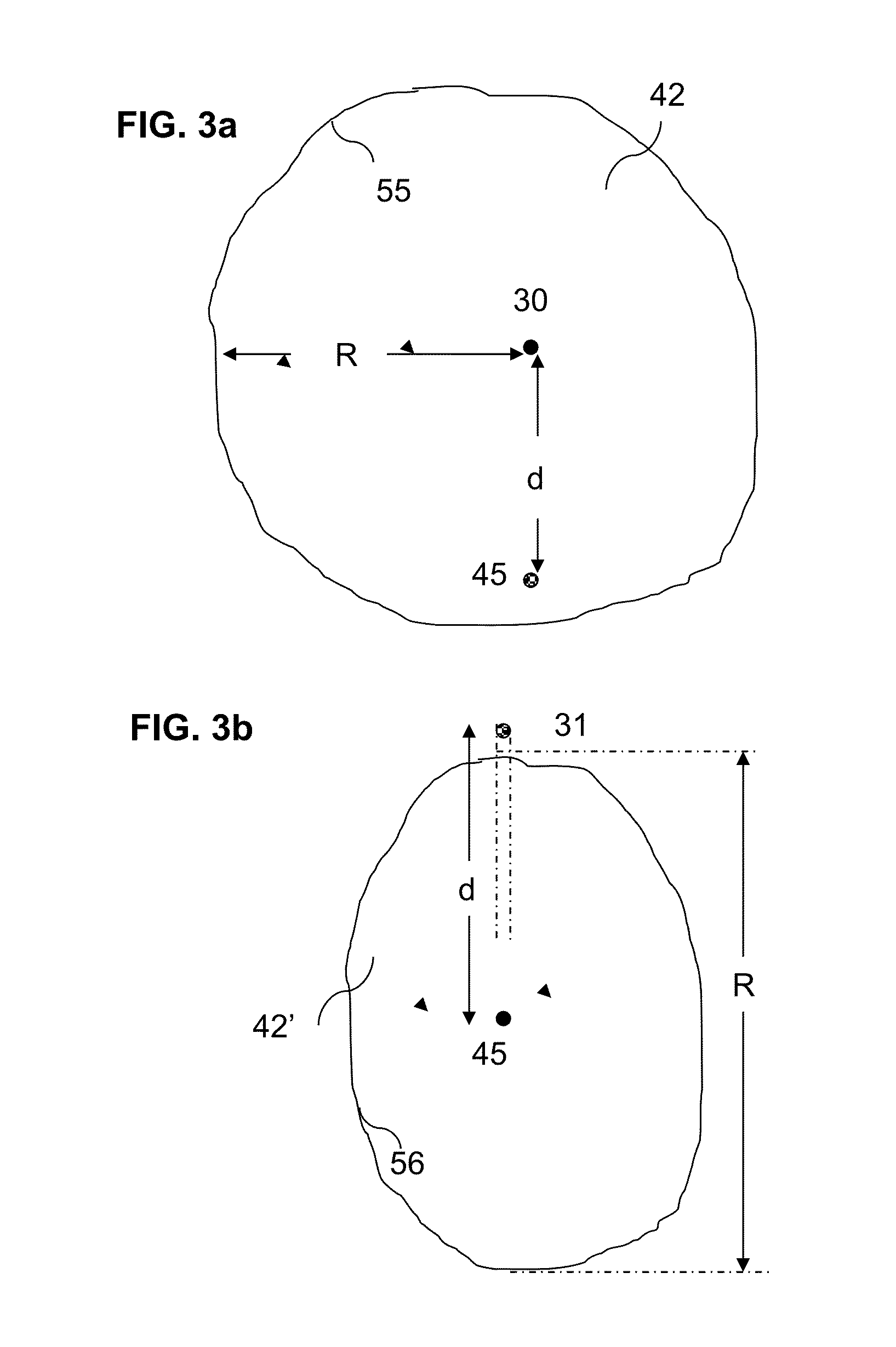Multi-well solution mining exploitation of an evaporite mineral stratum
a technology of evaporite mineral stratum and multi-well solution, which is applied in the direction of borehole/well accessories, alkali metal carbonates, alkali metal halide purification, etc., can solve the problems of high cost of mechanical mining methods for trona, 40 percent of soda ash production cost, and the difficulty of recovering trona by these methods, so as to avoid high vertical dissolution and avoid time loss
- Summary
- Abstract
- Description
- Claims
- Application Information
AI Technical Summary
Benefits of technology
Problems solved by technology
Method used
Image
Examples
example 1
[0368]Ore dissolution in a 7-well set, such as illustrated in FIG. 4e (hexagonal pattern for well arrangement), which is in fluid communication with a cavity created by lithological displacement was investigated via computer modeling to find the optimal injection / production flow patterns.
[0369]Each well in the set could be an injection well, a production well, or an inactive well. The constraints applied in the 7-well set were as follows: each 7-well set had at least one production well and at least one injection well, and thus could have from 0 up to 5 inactive wells.
[0370]For this 7-well pattern and constraints, there are 1,932 possible injection / production patterns. Out of the 1,932 possible patterns, only 255 fundamental flow patterns are unique after the reflection and rotation symmetries of the hexagonal shape are considered, the remainder of the patterns being derived patterns from reflection and rotation symmetries. A fundamental 7-well flow pattern could have from 0 derived...
example 2
[0376]Ore dissolution in a 31-well set, such as illustrated in FIG. 13c (a set with 1 center hexagonal pattern and 6 contiguous peripheral hexagonal patterns), which is in fluid communication with a cavity created by lithological displacement was investigated via computer modeling to find the optimal injection / production flow patterns. A set of wells this large should be capable of producing sufficient volumes of solution mined sodium brine to provide a substantial portion of a commercial-scale plant ore feed. Therefore, a 31-well set would be considered a “well field” in practical applications.
[0377]For this 31-well pattern, there are more than 617 trillions of possible well operation patterns. To limit the number of modeling runs, the 31-well patterns were limited to initially use in each hexagonal pattern an injection well in position 30 (center well in each hexagonal pattern) and production wells in positions 45 (peripheral wells in each hexagonal pattern).
[0378]Alternating betw...
PUM
| Property | Measurement | Unit |
|---|---|---|
| Time | aaaaa | aaaaa |
| Time | aaaaa | aaaaa |
| Specific weight | aaaaa | aaaaa |
Abstract
Description
Claims
Application Information
 Login to View More
Login to View More - R&D
- Intellectual Property
- Life Sciences
- Materials
- Tech Scout
- Unparalleled Data Quality
- Higher Quality Content
- 60% Fewer Hallucinations
Browse by: Latest US Patents, China's latest patents, Technical Efficacy Thesaurus, Application Domain, Technology Topic, Popular Technical Reports.
© 2025 PatSnap. All rights reserved.Legal|Privacy policy|Modern Slavery Act Transparency Statement|Sitemap|About US| Contact US: help@patsnap.com



